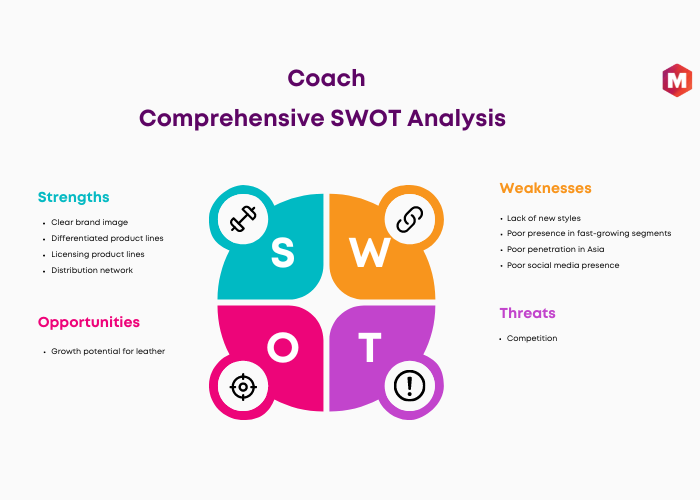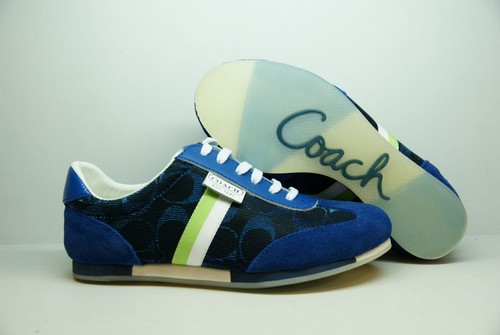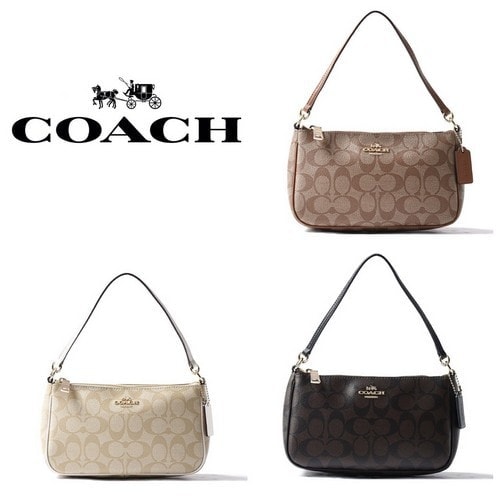Let’s explore the SWOT analysis of Coach by understanding its strengths, weaknesses, opportunities, and threats.
Coach is an American company specializing in luxury handbags, luggage, and other leather goods. The brand epitomizes classic American style and makes lifestyle accessories in trendy and sophisticated signature styles.
The company was started in 1941 in a godown, and only small bags were manufactured there. Today, it has become one of the world’s top sellers of bags, and its earnings are forecast at a whopping 1.17 billion USD in 2024. Coach has a powerful presence in the USA, with around 1000 independent stores nationwide.
In addition to this, the brand also has tie-ups with high-profile retail chains that sell its handbags. The company also launched its own website in 1999, through which the products can be purchased. Though the company manufactures handbags primarily, it also deals in watches, footwear, home furnishings, furniture, and office interiors through licensed partners.
Overview of Coach:
- Industry: Fashion
- Founded: 1941, 83 years ago, in New York City, U.S.
- Founders Lillian Cahn, Miles Cahn
- Headquarters: 516 W 34th St, New York, NY 10001, USA
- Number of locations: 986 stores
- Area served: Worldwide
- Key people: Todd Kahn (CEO), Stuart Vevers (creative director)
- Parent: Tapestry, Inc.
- Website: coach.com
Table of Contents
SWOT analysis of Coach

Strengths of Coach
1. Clear brand image
Coach handbags are positioned as an upmarket bag manufacturer, and the brand does everything possible to sustain its upscale image. Coach makes all its products using the best quality leather, and the brand also projects itself as a manufacturer of American-style handbags. This makes it popular from a nationalistic perspective as well.
2. Differentiated product lines
Though primarily handbags, Coach has a well-differentiated product line. Their bags include carry-alls, shoulder bags, satchels, cross bags, totes, clutches, and backpacks. Their wallets are differentiated in size, and they have large, medium, and small wallets as well as decorative purses. Though essentially classic in design, their products are clearly differentiated for men and women.
3. Licensing product lines
Though the company manufactures handbags primarily, it also deals in watches, footwear, home furnishings, furniture, and office interiors through licensed partners. By licensing, the costs could be managed better, and the company could focus on its core product, which was its specialty, namely handbags, while also selling other related merchandise.
4. Distribution network
The company has a powerful network in the US. To sustain the luxury branding while reaching out to the maximum number of customers, the company has around 1000 stores that exclusively sell Coach products.
They also sell through other retail chains, but the company has been very demanding in their partner selection, ensuring that only those retail brands that sync with their upscale image deal in their products.
5. In-store experience
The in-store experience of Coach handbag showrooms has also been designed with American positioning in mind. The store layout and ambiance have an American feel and are closely related to leather craft and the heritage of luxury brands.
Weaknesses of Coach
1. Lack of new styles
Coach is positioned as a luxury handbag brand that personifies American heritage. Thus, the brand has an old-age feel to its products, and most look like vintage pieces. This makes its style seem repetitive and boring.
2. Poor presence in fast-growing segments
Though Coach is a top player in leather handbags, it has a poor presence in other fast-growing segments, such as footwear or clothing. Their current portfolio is quite unexciting and lacks creativity.
3. Poor penetration in Asia
Compared to competitors like Louis Vuitton or Salvatore Ferragamo, Coach has minimal presence in Asia, a market with a lot of promise. Foraying into this market can boost sales and create scope for further expansion.
4. Poor social media presence
Since luxury brands cannot advertise in the mainstream media, they often turn to social media for promotions. However, Coach does not have a very strong social media marketing strategy, making it less visible amongst customer groups.
Opportunities of Coach
1. Growth potential for leather
Leather is very trendy today. It was used only in purses earlier, but today, there are leather clothes, jackets, trimmings, and even jewelry. This will open up a new avenue for a core leather goods maker like Coach.
Threats of Coach
1. Competition
Coach’s biggest competitors are Salvatore Ferragamo, Louis Vuitton, Jimmy Choo, Michael Kors, and Baggit.
Conclusion
In conclusion, Coach is a competitive player in the luxury handbag sector, known for its distinct brand image and high-quality items made of premium leather. Despite obstacles such as a lack of product diversity and a limited presence in fast-growing Asian markets, Coach has the potential to expand its product lines into new leather goods areas and increase its global reach.
Coach might benefit from improving its social media presence and innovating its product assortment to avoid challenges from severe competition while capitalizing on growth potential. Coach’s rich tradition and devotion to high craftsmanship position it well to handle market challenges and maintain its status as a leading American luxury brand.
Liked this post? Check out the complete series on SWOT


